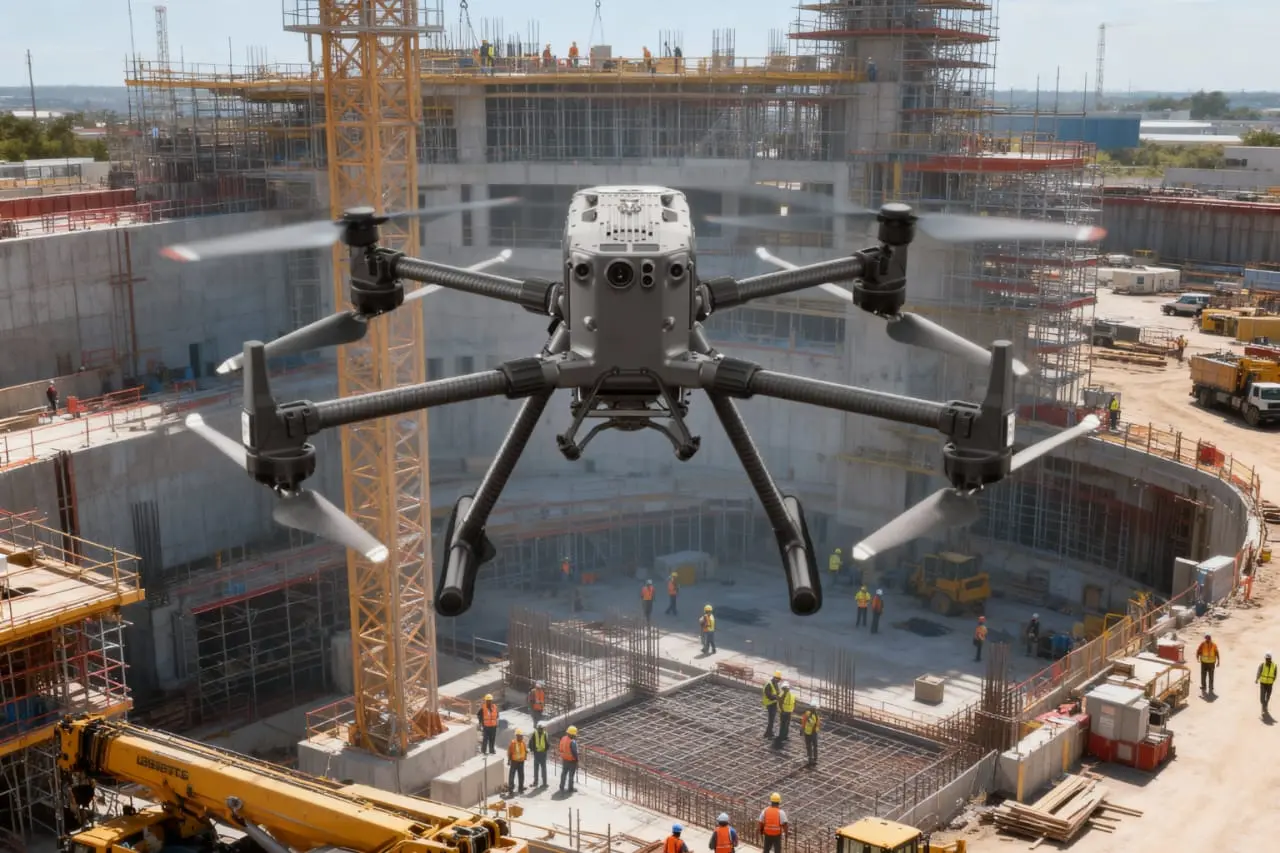Capturing the Inspection Challenge

Oil and gas remain central to Saudi Arabia’s economy and are critical to achieving the ambitions of Vision 2030. But maintaining the sector’s massive infrastructure from refineries and pipelines to storage tanks has always been a time-consuming, expensive, and risky process. Traditional inspections often rely on scaffolding, cranes, and shutdowns that disrupt operations for weeks at a time.
Take the example of a diesel tank inspection. Traditionally, building and dismantling scaffolding, shutting down operations, and deploying manual crews could stretch the process to two weeks or more. During this period, the asset would be offline, resulting in millions of dollars in lost revenue.
Now, drones are rewriting this story. The same inspection that once consumed two weeks was completed in just four hours using drones. That is a time savings of 13 days and 20 hours, transforming downtime into uptime and showing exactly why drones are a strategic pillar of Vision 2030.
How Drones Transform Energy Operations
The adoption of drones in oil and gas is not just about saving time; it is about transforming how the industry works.
- Faster Workflows: Drones bypass the need for scaffolding and manual climbs. With automated flight paths, they scan entire assets in hours, collecting high-resolution imagery and thermal data that can be analyzed immediately.
- High Accuracy: Drones equipped with zoom cameras, thermal sensors, and LiDAR detect cracks, corrosion, and leaks invisible to the naked eye. They capture centimeter-level detail, ensuring no defect goes unnoticed.
- Cost Efficiency: In energy and utilities, drone inspections can cut operational costs by 50–70%. They enable more frequent checks without shutdowns and reduce the manpower and equipment costs of traditional inspections.
- Safety Gains: Workers no longer need to scale flare stacks, powerlines, or refinery structures. By replacing risky climbs with aerial inspections, companies reduce workplace accidents in hazardous environments by as much as 91%.
These technical advantages show why drones are not optional add-ons but enablers of efficiency, safety, and sustainability.
Why This Matters for Vision 2030

- Economic Efficiency: Faster inspections mean less downtime and higher productivity. Saving nearly 14 days of downtime in one inspection is not just impressive. It is transformative for an industry where every hour of output counts.
- Sustainability: Drones detect methane leaks faster and more frequently, reducing emissions by 30% or more. This supports the Kingdom’s environmental commitments under Vision 2030 and global climate frameworks.
- Safety and Social Impact: Reducing accident risk by 91% ensures that workers are safer, healthier, and more productive. This aligns with Vision 2030’s focus on enhancing quality of life.
- Cross-Sector Relevance: The same drone technology driving oil and gas efficiency also supports smart cities, utilities, agriculture, and environmental monitoring. By investing in drones, Saudi Arabia builds cross-industry capabilities that amplify the impact of Vision 2030.
Drones are not just inspection tools; they are strategic assets that deliver measurable results across the national agenda.
Roadmap for Scaling Drones in Vision 2030
To fully realize these benefits, Saudi Arabia must accelerate the adoption of drones across industries under Vision 2030.
- Regulatory Acceleration: Expand frameworks for safe beyond-visual-line-of-sight (BVLOS) operations, enabling drones to handle pipeline monitoring, logistics, and regional inspections without human oversight.
- Local R&D and Manufacturing: Invest in Saudi-based drone hardware, sensors, and data analytics platforms. This ensures the Kingdom builds sovereign capabilities and reduces reliance on imports.
- Ecosystem Platforms: Strengthen collaboration through platforms like SADEX, where regulators, operators, and innovators align standards, showcase real-world applications, and create joint ventures.
- Scaling Across Sectors: Move from pilots to national deployment by embedding drones into routine operations for oil and gas, utilities, smart cities, and agriculture.
By following this roadmap, Saudi Arabia can position drones as a national infrastructure layer, not just a sector-specific tool.
